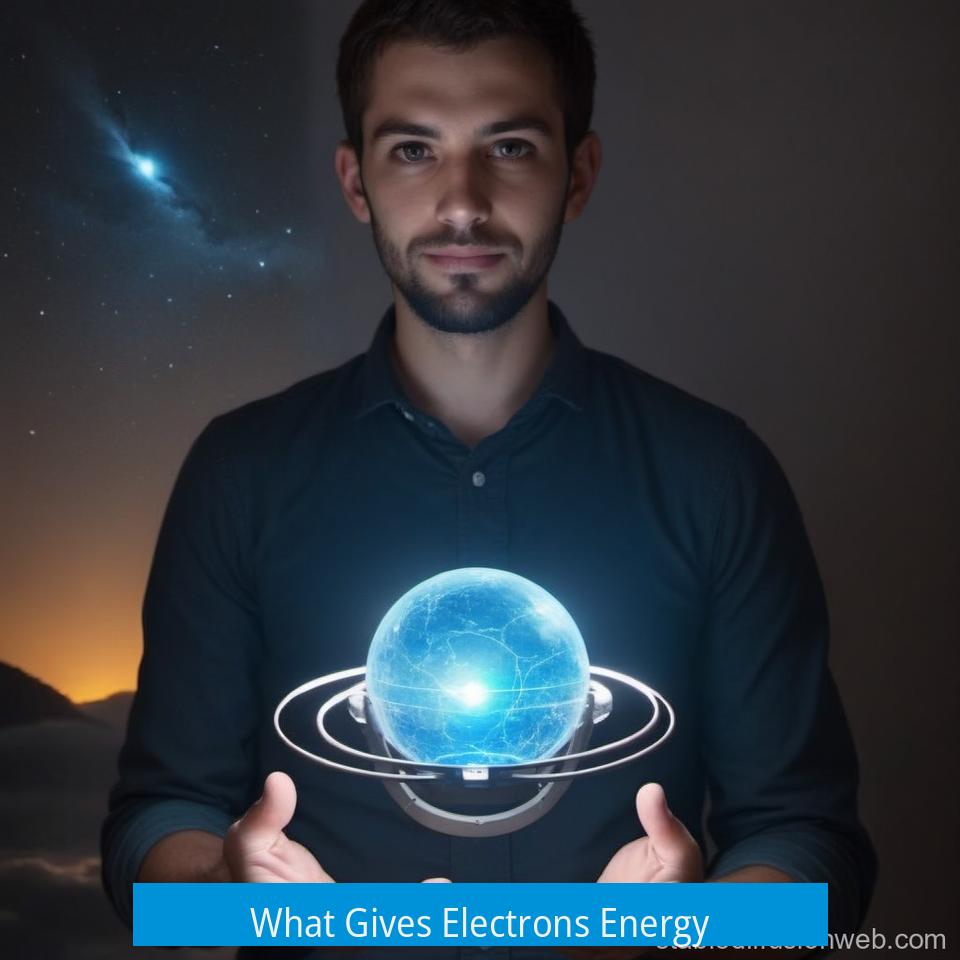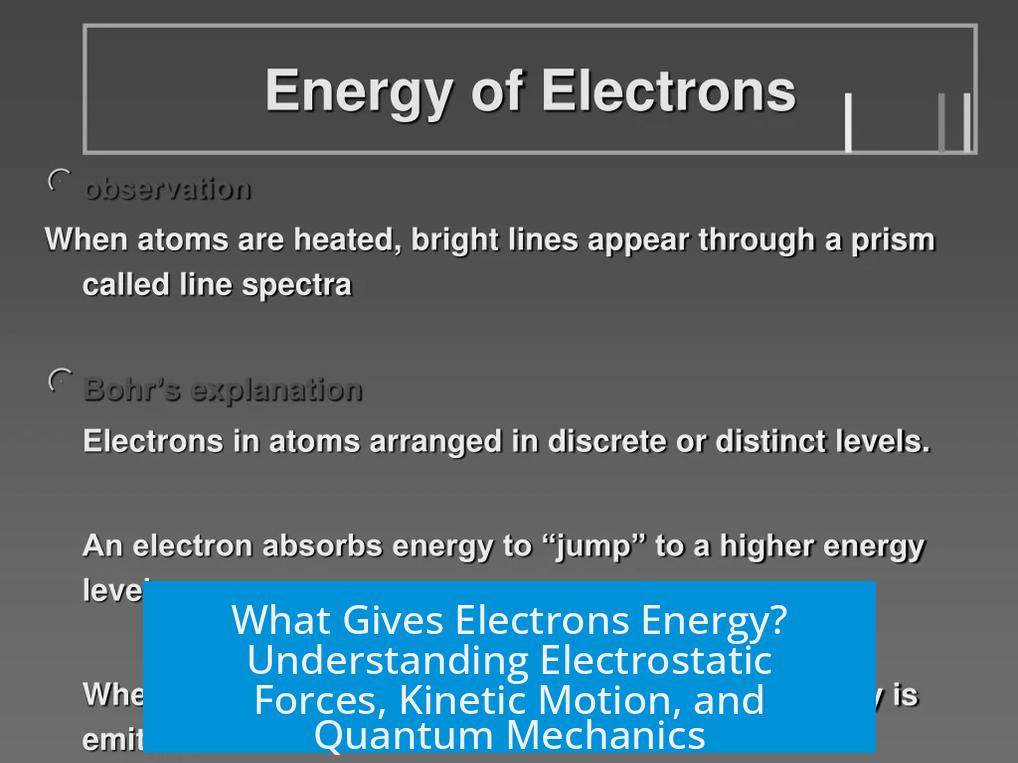What Gives Electrons Energy?

Electrons gain energy primarily from the electrostatic attraction between their negative charge and the positive charge of the atomic nucleus, resulting in potential energy that transforms into kinetic energy as electrons move. Quantum mechanics defines discrete energy levels governing their states. Energy input is only required to change these states, not to maintain existing ones.
Electrostatic Attraction: The Source of Electron Energy
Electrons carry a negative charge, while the nucleus holds a positive charge. This difference creates an electrostatic force pulling the electrons toward the nucleus. This fundamental attraction forms the basis of an electron’s energy.
The interaction produces potential energy, the energy stored by virtue of the electron’s position relative to the positively charged nucleus. The closer the electron is to the nucleus, the lower its potential energy due to stronger electrostatic attraction.
Kinetic Energy of Electrons in Motion
In addition to potential energy, electrons possess kinetic energy because they move around the nucleus. The balance between potential and kinetic energy determines the electron’s behavior.
When an electron moves closer to the nucleus, it loses potential energy. This reduction happens because the electron is moving to a region of stronger positive charge influence.
According to energy conservation, the decrease in potential energy converts into an increase in kinetic energy. The electron speeds up as it approaches the nucleus.
Energy Transformation Between Potential and Kinetic Energy
This energy conversion is continuous as electrons oscillate between different positions relative to the nucleus. The total energy of the electron remains constant in this classical picture, just shifting between two forms.
Potential energy is highest when the electron is farthest from the nucleus, and kinetic energy is lowest at this point. Conversely, when the electron nears the nucleus, kinetic energy peaks and potential energy dips.
- Electron’s potential energy decreases as it approaches nucleus
- Kinetic energy increases correspondingly to maintain total energy
- Energy transformation drives electron motion dynamics
Stable Electron States and Constant Energy
Electrons can exist in stable orbits or energy states around the nucleus. At these points, kinetic and potential energy remain constant. The electron moves in a steady state without net energy loss or gain.
This condition resembles a planet orbiting a star, where constant speed and radius keep the orbit stable. The electron’s momentum balances the electrostatic attraction, maintaining position.
No energy is needed to sustain this motion. Energy is only necessary to change the electron’s energy state—either pushing it closer to or farther from the nucleus.
Quantum Mechanics: The New Perspective on Electron Energy
Classical models treat electrons as particles orbiting in fixed paths. Quantum mechanics changes this view fundamentally. Electrons behave more like waves and are described by wave functions.
This means electrons do not have a single defined position or velocity at any moment. Instead, their presence is expressed as probabilities spread around the nucleus in certain regions or orbitals.
These orbitals correspond to discrete energy levels. An electron can be found in one of these levels with a certain probability, but it does not follow fixed classical orbits.
| Classical View | Quantum Mechanical View |
|---|---|
| Electron as a particle in fixed orbit | Electron as wave with probability distribution |
| Continuous energy values | Discrete energy levels (quantized) |
| Energy changes with position | Energy states correspond to allowed wave states |
Energy Required to Change Electron States
An electron does not consume energy to maintain movement in a particular energy state. Instead, it requires energy to move to a different state—a process known as excitation.
For example, absorbing a photon of light can supply the exact energy needed for an electron to jump from a lower energy level to a higher one.
If energy is released, such as when an electron falls from a higher to a lower energy level, it emits energy generally in the form of photons.
- Energy input needed only to change electron energy state
- No energy required for stable state maintenance
- Energy release occurs during state transition to lower levels
The Quantum Mystery of Electron Stability
One puzzle in physics is why electrons do not spiral into the nucleus despite being attracted to it. Classical physics predicted such decay due to continuous loss of energy as electromagnetic radiation.
Quantum mechanics resolves this issue by postulating that electrons cannot have zero energy. The lowest allowed energy state, called the ground state, maintains the electron at a finite energy level.
This prevents the electron from losing energy indefinitely and collapsing into the nucleus. The electron’s wave-like properties and quantization define stable, non-radiating states.
“Why quantum mechanics works remains a profound question; its fundamental principles resist intuitive explanation.”
Summary: What Gives Electrons Energy?
- Electrons gain energy through electrostatic attraction to the nucleus, creating potential energy.
- Electron motion around the nucleus gives them kinetic energy.
- Energy constantly shifts between potential and kinetic forms while total energy remains constant unless state changes.
- Quantum mechanics describes electrons as wave-like, existing in discrete energy levels with probabilistic locations.
- Energy is needed to change electron states, not to sustain them.
- Electrons remain stable due to quantized energy preventing energy loss predicted by classical physics.





Leave a Comment